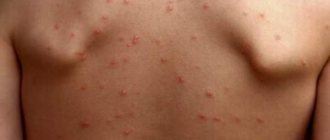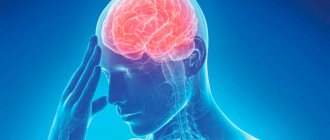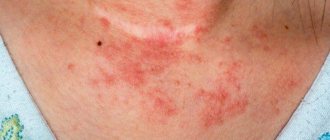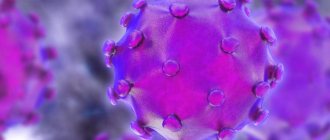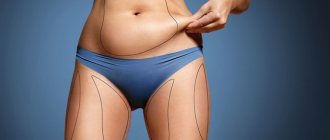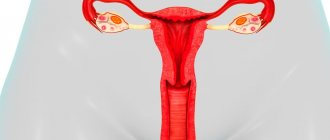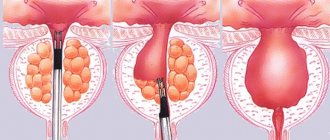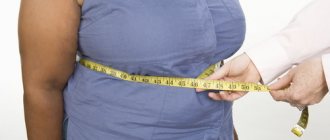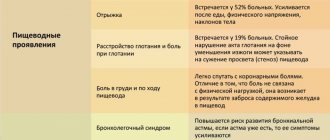Naalya Ivanovna Romanenko, candidate of medical sciences, neurologist of the highest category of Into-Sana medical centers, told the Observer about what a microstroke is and how it differs from a stroke.
In everyday life, using the word “micro-stroke” probably characterizes a less severe acute cerebrovascular accident than a stroke. In modern medicine, the concept of “microstroke” does not exist. Instead, the term transient ischemic attack (TIA) is used. Often, TIA is considered a benign phenomenon, and stroke is considered a serious disease. Such views are wrong. TIA and stroke represent a single pathological process, which is based on an acute ischemic cerebrovascular accident. In the case of TIA, a transient acute vascular neurological disorder is observed, which is not accompanied by the formation of cerebral infarction. Both conditions carry a potential risk of disability and death. However, with a TIA, it is still possible to prevent brain damage through treatment. In Ukraine, from 90 to 100 cases of TIA are registered per 100 thousand population. TIAs most often occur in older people. At ages 65 to 69 years, TIA occurs in 2.7% of men and 1.6% of women, and at ages 75 to 79 years, it occurs in 3.6% of men and 4.1% of women.
What causes a mini stroke?
There are many negative factors that significantly increase the risk of developing the disease in question. Here are the main ones:
- Too hard physical labor and working with weights that place an undue burden on the body;
- Dependence on harmful substances: nicotine, drugs or alcohol;
- Excessive excess body weight;
- Constant lack of sleep, the influence of stress, depression, constant worries and worries;
- Eating junk food, violating the basics of proper nutrition;
- Working in hazardous conditions;
- Poisoning of the body with substances that can provoke vascular spasms.
Also, the likelihood of a mini-stroke increases significantly with diseases such as:
- Increased level of blood viscosity;
- Problems with blood vessels: their inflammation, any congenital anomalies;
- Heart diseases;
- Thrombosis
- Diabetes.
The factor of heredity may play an important role. Even in the absence of the diseases mentioned, the risk of experiencing a mini-stroke increases significantly for every man aged 45 years or older.
Recovery
To restore impaired brain functions after an attack, doctors select nootropic drugs. Their goal is to make the affected areas of the brain work and protect those parts that are in close proximity to the focus of necrosis. Taking nootropics has a positive effect on the condition of people who have suffered from certain neurological diseases.
Psychotherapists are involved in the recovery process of a woman after a mini-stroke. Working with them restores a deteriorated psychological state and strengthens the body's resistance to stress factors and nervous overload.
Symptoms and main signs
All possible symptoms of a microstroke are usually divided into two large categories: focal and cerebral. In the first case, the normal blood circulation of only certain parts of the brain is disrupted, so by what functions are affected, one can understand which area of the brain has undergone an attack. The following symptoms are possible:
- Numbness and paralysis of various limbs;
- Sudden vision problems, most often localized in the direction where the attack occurred;
- Problems with movement, loss of normal muscle tone;
- Impaired memory and thought processes;
- Speech problems;
- Problems with swallowing, etc.
As for cerebral symptoms, they look like this:
- Sudden onset of headaches, dizziness;
- Problems with coordination;
- Weakness in arms, legs;
- Fainting and clouding of consciousness;
- It becomes difficult to breathe, the patient complains of a “lump” in the throat;
- Attacks of nausea and vomiting;
- Painful sensitivity to light, noise.
If such phenomena occur, it is imperative to call an ambulance.
General information
Cerebrovascular diseases , which include stroke and transient ischemic attack (ministroke), are an important medical and social problem. What is a microstroke? This is a short-term episode of neurological dysfunction caused by temporary cerebral ischemia, which does not lead to changes in this part of the brain and the development of stroke .
The arterial cerebral blood supply is formed from two vascular systems: vertebrobasilar and carotid. The carotid basin is formed by the external and internal carotid arteries, which arise from the common carotid artery, or rather from its carotid sinus. The internal carotid artery is a larger branch of the common carotid artery, which enters the skull, passing through the carotid canal and making several bends, which, in congenital pathology, can cause a deterioration in the blood supply to the brain. The internal carotid artery gives off five branches that supply blood to different parts of the brain and there are anastomoses (connections) between the branches.
The vertebrobasilar basin is formed by the basilar and two vertebral arteries, which enter the canal of the transverse processes of the cervical vertebrae (VI–II), and then make several bends along their course. Thus, even the anatomical bends and passage of the vertebral arteries in the bone canal of the cervical vertebrae are a predisposing factor to a decrease in blood supply to the brain under certain conditions, which will be discussed below.
The classic definition of transient ischemic attack indicates an interval of persistence of neurological symptoms of up to 24 hours. However, the 24-hour period is arbitrary, and the average duration of an episode can be 8-15 minutes, but most often the symptoms disappear within one 1 hour. Since 2002, the definition of this condition has been expanded and the main fact taken into account is the absence of pathological changes in brain tissue during the period of temporary ischemia .
A transient ischemic attack develops suddenly and has symptoms similar to those of a stroke , but they are reversible because transient ischemia does not cause changes in brain tissue. The highest incidence of micro-strokes is observed in people aged 65 to 80 years. However, cases are not uncommon in people of young working age from 29 to 45 years. In most cases, the causes of transient cerebrovascular accidents in young people are: increased blood pressure due to neurocirculatory dystonia or true uncontrolled arterial hypertension , as well as heart or blood diseases, which occurs even in children. Circulatory disorders can occur in any arterial area of the brain, but in the carotid area they occur 4-5 times more often than in the vertebrobasilar area.
Many patients do not attach importance to transient disorders and do not consult a doctor. In most cases, the diagnosis is established after the fact, when the doctor asks about other diseases. In the best case, the patient comes in, but the diagnosis is made from the patient’s words, since by the time of the examination the symptoms have already regressed. Nevertheless, TIA is an emergency condition that requires hospitalization of the patient, determination of the causes of cerebral ischemia and treatment according to the algorithm for acute cerebrovascular disorders. This is due to the fact that in some patients, attacks can be repeated during the day (2-3 attacks) and everyone after a TIA has a risk of developing stroke and myocardial infarction . Approximately one third of patients develop a stroke within a year after the first transient circulatory disorder.
Micro-stroke “on your feet”
Since the symptoms of a mini-stroke can last for a fairly limited time, some resilient men can suffer them without even stopping their daily activities. It seems to them that nothing terrible is happening - just a slight malaise, which goes away after an hour. Accordingly, neither a visit to a doctor nor adequate treatment occurs here.
This is very dangerous, because an ignored attack often becomes the reason for its rapid recurrence or, in general, the main factor in the development of cerebral ischemia. If this happens, the consequences will be very serious, including disability, and treatment will take several months or even years.
First aid for microstroke
If a person has a mini-stroke, then you need to immediately call an ambulance, and while it is on the way, take the following measures:
- Place the patient on a flat plane, raise the head slightly above the body and turn to the side;
- Loosen the straps, unfasten the buttons;
- Open the windows in the room;
- If possible, eliminate noise and other irritants;
- You cannot let a person panic, so it is necessary to have calming conversations with him;
- If necessary, cardiac massage and artificial respiration are performed.
You cannot give a person with an attack medications that affect the condition of blood vessels, blood pressure, slow him down, or allow him to get up.
Who does the disease affect?
This disease is getting younger and, if previously it was believed that it only affected older people, now this is not the case. Much depends on the person’s health status, lifestyle and chronic diseases.
Still, patients with the following problems are at risk:
- Atherosclerosis (chronic artery disease);
- Hypertension (pressure surges can trigger a minor stroke);
- Vascular lesions;
- Diabetes mellitus (high sugar content affects the walls of blood vessels);
- Alcohol abuse (the functionality of brain vessels decreases, toxins destroy tissue);
- Congenital and acquired heart diseases.
Busy people suffer a micro-stroke on their feet, that is, they do not pay attention to its symptoms and first signs, trying to maintain their usual activity. This should not be done under any circumstances, since within 24-48 hours there is a high risk of a stroke; the consequences in this case can be disability and even death. Therefore, a minor stroke is an indication for emergency hospitalization of the patient.
Treatment of male microstroke
The very first measure in treatment is to restore normal blood flow to the brain. This is done with the help of special medications:
- Means for normalizing blood pressure;
- Cardiac glycosides that help normal heart function;
- Vasoactive drugs that help improve blood circulation in brain tissue;
- Drugs that help reduce blood clotting;
- Nootropics that allow you to stimulate brain function, thought processes, and nutrition of brain cells.
- In addition to medications, the patient undergoes additional rehabilitation measures:
- Massages;
- Special exercises for breathing;
- Physiotherapy;
- If necessary, meet with a psychologist or speech therapist.
Possible consequences
A microstroke is a serious phenomenon that most often leaves behind temporary or permanent consequences of this kind:
- Headaches and slight dizziness;
- Increased fatigue;
- Absent-mindedness and inability to focus attention;
- Drowsiness and general weakness;
- Sudden mood swings.
If the problem is not treated in a timely manner, very dangerous consequences may occur in the form of:
- Paralysis;
- Problems with coordination, memory, speech, vision;
- Development of mental disorders;
- Problems with normal urination and swallowing.
To prevent such problems, it is necessary to provide timely assistance to the patient and call an ambulance.
Differences between a minor stroke and an ischemic one
In fact, in terms of symptoms, these two diseases are quite similar (even to diagnose a microstroke at home, the patient needs, for example, to try to raise both arms; the same exercise is used for stroke). They are distinguished only by their duration (a ministroke comes and goes quickly) and the consequences for the body (a minor stroke can go away on its own, without medical intervention). But the diagnostic and treatment methods are the same, because usually a microstroke foreshadows the onset of an ischemic one.
Make an appointment
Possible manifestations: numbness and immobilization of one half of the face, unsteadiness of gait, severe headache, dizziness. Symptoms can be isolated or combined. With microstrokes, the symptoms disappear within 24 hours.
Prevention
To prevent a micro-stroke, you need to follow these fairly simple recommendations from specialists:
- Give up bad habits: alcohol, smoking, and especially drugs;
- Avoid stress and overexcitement, do not quarrel whenever possible and do not succumb to depression;
- Play sports with moderate physical activity;
- Get enough sleep;
- Avoid obesity, eat properly and in moderation;
- Periodically undergo examination and preventive treatment.
It is enough to follow these simple rules, and the likelihood of a micro-stroke can be minimized.
